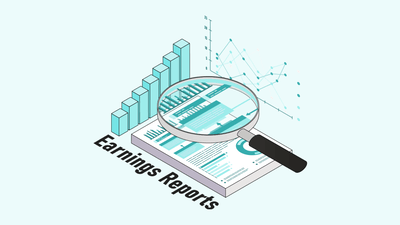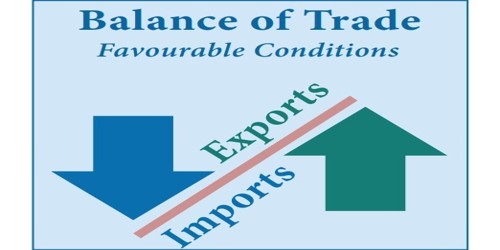
In the dynamic world of stock market investing, where prices fluctuate daily and economic uncertainties loom, finding a strategy that balances risk and reward is essential. Dollar cost averaging (DCA) is a time-tested approach that allows investors to build wealth steadily by investing a fixed amount regularly, regardless of market conditions. As of May 21, 2025, 03:35 PM HKT, with the S&P 500 up 7 percent year-to-date amidst high interest rates (5.5 to 6 percent) and a potential mild recession on the horizon, DCA offers a disciplined way to navigate volatility. Social media discussions on platforms like X highlight growing retail investor interest in DCA, with users praising its simplicity and effectiveness in turbulent markets.
Understanding Dollar Cost Averaging
Dollar cost averaging involves investing a fixed amount of money in a stock, exchange-traded fund (ETF), or mutual fund at regular intervals—weekly, monthly, or quarterly—regardless of the asset’s price. By spreading investments over time, DCA reduces the risk of buying at a market peak and smooths out the average cost per share.
Example: An investor allocates 500 dollars monthly to an S&P 500 ETF like Vanguard’s VOO. If VOO’s price is 450 dollars one month, they buy 1.11 shares; if it drops to 400 dollars the next month, they buy 1.25 shares. Over time, their average cost per share is lower than the average market price, mitigating the impact of volatility.
In 2025, with market fluctuations driven by interest rate policies, geopolitical tensions, and corporate earnings, DCA is particularly relevant. The strategy aligns with the long-term upward trend of the stock market, historically averaging 10 percent annual returns for the S&P 500 over decades, despite short-term dips.
Benefits of Dollar Cost Averaging

DCA offers several advantages that make it a powerful tool for stock investing, especially in the uncertain market of 2025.
1. Mitigates Market Timing Risk
Attempting to time the market—buying low and selling high—is notoriously difficult, even for professionals. DCA eliminates the need to predict peaks and troughs by spreading purchases over time. In 2025, with the S&P 500 experiencing 5 to 10 percent corrections amid recession fears, DCA ensures investors buy more shares when prices are low, reducing the average cost.
Example: During a 2025 market dip, an investor buys more shares of Apple (AAPL) at 150 dollars than at 200 dollars, lowering their average cost to 175 dollars over a year.
2. Encourages Disciplined Investing
DCA fosters a consistent investment habit, preventing emotional decisions like halting contributions during downturns. In 2025, X posts from retail investors highlight DCA’s role in maintaining discipline, with users sharing how automated investments kept them committed during a volatile Q1.
Impact: Regular contributions compound over time, leveraging the stock market’s long-term growth.
3. Reduces Emotional Stress
Market volatility can trigger panic-selling or greed-driven buying. DCA removes emotional bias by automating investments, ensuring steady participation regardless of headlines about rate hikes or earnings misses.
Example: An investor using DCA continues buying Microsoft (MSFT) during a 10 percent tech sector drop, avoiding the urge to wait for a “better” price that may never come.
4. Affordable for All Investors
DCA allows investors with limited capital to start small, making stock investing accessible. In 2025, platforms like Fidelity and Robinhood offer commission-free trading and fractional shares, enabling 100-dollar monthly investments in high-priced stocks like Nvidia (NVDA).
Impact: Retail participation has surged, with 25 million U.S. investors using DCA, up from 15 million in 2020.
5. Leverages Compounding Over Time
By investing regularly, DCA maximizes the power of compounding, as reinvested dividends and capital gains grow exponentially. In 2025, a 500-dollar monthly DCA plan in SPY (S&P 500 ETF) with a 7 percent annualized return could grow to 200000 dollars in 20 years.
Impact: Long-term investors benefit most, aligning with the market’s historical upward trajectory.
Limitations of Dollar Cost Averaging
While powerful, DCA has limitations that investors should consider in 2025.
1. Missed Opportunities in Bull Markets
In strong bull markets, lump-sum investing can outperform DCA by capturing early gains. In 2025, if the S&P 500 rallies 15 percent early in the year, a lump-sum investor benefits more than a DCA investor spreading purchases.
Mitigation: Combine DCA with occasional lump-sum investments during significant dips, using cash reserves.
2. Transaction Costs
While many platforms offer commission-free trading in 2025, some charge fees for mutual funds or small transactions. Frequent DCA purchases could accumulate costs if not managed carefully.
Mitigation: Use low-cost brokers like Schwab or ETFs like VOO with minimal expense ratios (0.03 percent).
3. No Protection Against Losses
DCA reduces the average cost but doesn’t prevent losses in prolonged bear markets. In 2025, a severe recession could depress stock prices for months, delaying returns.
Mitigation: Diversify across sectors (tech, healthcare, staples) and asset classes (bonds, REITs) to cushion downturns.
4. Requires Long-Term Commitment
DCA is most effective over 5 to 10 years, requiring patience. Investors seeking quick gains in 2025 may find DCA too slow compared to speculative strategies.
Mitigation: Set clear long-term goals, such as retirement or wealth-building, to stay motivated.
Implementing DCA in 2025: Practical Strategies

To maximize the power of DCA in the 2025 stock market, consider these strategies tailored to current conditions.
1. Choose the Right Investments
Select diversified, low-cost assets to reduce risk and fees. In 2025, focus on:
ETFs: VOO or SPY for broad market exposure, with 0.03 to 0.09 percent expense ratios.
Blue-Chip Stocks: AAPL, MSFT, or Johnson & Johnson (JNJ) for stability and dividends (2 to 3 percent yields).
Sector ETFs: Technology (XLK) or healthcare (XLV) for growth, balanced with consumer staples (XLP).
Action: Allocate 300 dollars monthly to VOO and 200 dollars to MSFT for a 50000-dollar portfolio.
2. Automate Investments
Set up automatic contributions through brokerage platforms to ensure consistency. In 2025, Fidelity, Schwab, and Vanguard offer recurring investment plans with no minimums.
Action: Schedule 500 dollars monthly transfers to VOO on the 1st of each month via Schwab’s auto-invest feature.
3. Diversify Across Time and Assets
Spread investments across multiple stocks or ETFs to reduce sector-specific risks. In 2025, a diversified DCA plan might include 40 percent tech (XLK), 30 percent consumer staples (XLP), and 30 percent bonds (BND).
Action: Invest 200 dollars monthly in XLK, 150 dollars in XLP, and 150 dollars in BND for balanced exposure.
4. Reinvest Dividends
Reinvest dividends automatically to compound returns. In 2025, dividend-paying stocks like Coca-Cola (KO) yield 3 percent, adding to long-term growth.
Action: Enable dividend reinvestment plans (DRIPs) on Robinhood for KO and JNJ holdings.
5. Monitor and Adjust Periodically
Review your DCA plan quarterly to ensure alignment with goals and market conditions. In 2025, rebalance if tech stocks overweight your portfolio due to a rally.
Action: Use Vanguard’s portfolio analyzer to check allocations and sell overperforming assets to maintain a 60-40 stock-bond mix.
6. Leverage Market Dips
Increase contributions during market corrections (10 percent or more) to buy at lower prices. In 2025, a Q3 dip triggered by recession fears offers a buying opportunity.
Action: Boost monthly contributions from 500 to 1000 dollars during a 10 percent S&P 500 decline, using cash reserves.
Case Study: DCA in Action in 2025
Consider Alex, a 30-year-old professional with 6000 dollars annually to invest (500 dollars monthly). Concerned about 2025’s volatility—driven by 6 percent interest rates and geopolitical tensions—he uses DCA to build a portfolio: 300 dollars monthly in VOO (S&P 500 ETF) and 200 dollars in JNJ (healthcare stock).
In January 2025, VOO is 450 dollars per share, yielding 0.67 shares per month; by June, a 10 percent dip lowers VOO to 405 dollars, giving 0.74 shares. JNJ fluctuates between 150 and 170 dollars, averaging 160 dollars. By year-end, Alex’s portfolio holds 8.5 VOO shares (3825 dollars at 450 dollars) and 15 JNJ shares (2550 dollars at 170 dollars), totaling 6375 dollars, a 6.25 percent return, matching the S&P 500’s 7 percent gain. Dividends from JNJ (90 dollars) are reinvested, adding 0.5 shares.
Alex’s DCA strategy lowers his average cost per share (440 dollars for VOO, 160 dollars for JNJ), cushioning volatility. Automated contributions via Fidelity ensure discipline, and X discussions reinforce his confidence in DCA during market dips. Alex plans to continue DCA for 10 years, targeting 100000 dollars by 2035.
Implications for Investors in 2025

DCA’s power lies in its simplicity and resilience, making it ideal for 2025’s uncertain market. Key implications include:
Accessibility: Retail investors, managing 30 percent of U.S. equity volume, adopt DCA via platforms like Robinhood, democratizing wealth-building.
Risk Management: DCA aligns with the market’s long-term growth, reducing exposure to short-term corrections.
ESG Alignment: Investors use DCA in ESG ETFs like ESGU, reflecting 2025’s focus on sustainability, with 15 billion dollars in inflows.
Institutional Use: Hedge funds apply DCA-like strategies in systematic investing, stabilizing markets.
Risks to Consider
While effective, DCA isn’t foolproof:
Prolonged Downturns: A 2025 recession could delay returns, requiring patience.
Opportunity Costs: Lump-sum investing may outperform in strong rallies, as seen in early 2023.
Inflation: Rising costs could erode purchasing power, necessitating higher contributions.
Mitigate these by diversifying, monitoring inflation via X or Bloomberg, and maintaining an emergency fund.
Conclusion
Dollar cost averaging is a powerful strategy for stock investing in 2025, offering a disciplined, low-stress way to navigate volatility and build wealth. By mitigating timing risks, encouraging consistency, and leveraging compounding, DCA empowers investors to capitalize on the market’s long-term growth, despite short-term uncertainties like high interest rates or recession fears. Through automated contributions, diversified assets, and strategic adjustments, investors can harness DCA’s benefits in today’s market. As retail participation grows and platforms make investing accessible, DCA remains a cornerstone for achieving financial goals in the dynamic stock market of 2025.








